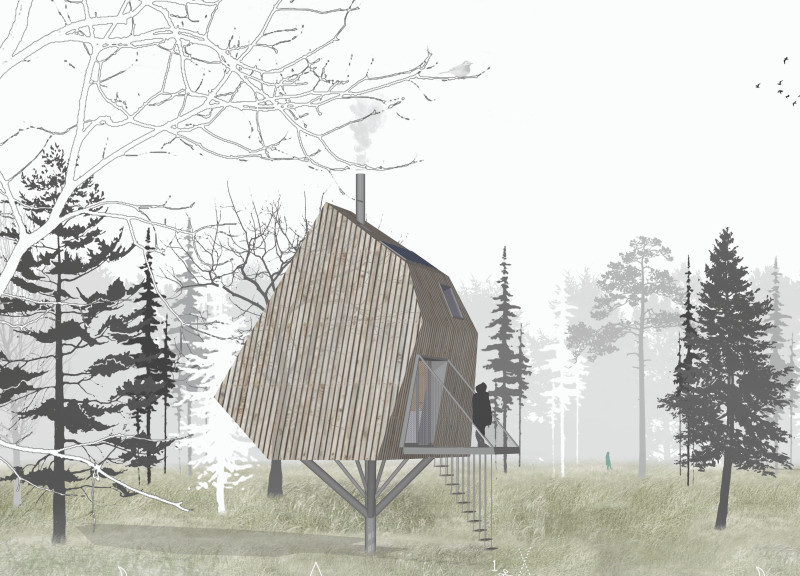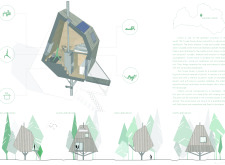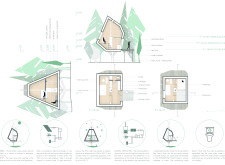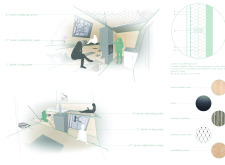5 key facts about this project
The T(h)ree house is located in Latvia, where it blends into the lush landscape while encouraging a simple and meditative lifestyle. The design features three main areas: a living unit, a meditation unit, and a sleeping unit. Each of these parts serves its own purpose while maintaining a connection to the outdoors, reflecting the principles of balance and tranquility often associated with meditation.
Architectural Composition
The layout of the T(h)ree house is defined by three distinct areas that connect with one another. This arrangement allows for a natural flow between daily activities, creating a sense of harmony. The structure takes on shapes that evoke trees, enabling it to fit comfortably within its surroundings. This thoughtful approach enhances the overall experience of living in the house, as its forms are in tune with nature.
Sustainability Features
The house places a strong emphasis on sustainability. Solid wood walls not only connect the structure to the natural environment but also provide essential thermal insulation. The use of wood fiber board for added insulation meets modern energy efficiency standards. Additionally, solar panels harness sunlight, and a heat generator recycles warmth from the fireplace, promoting a reduction in energy use and reliance on outside resources.
Ventilation and Waste Management
Natural ventilation plays an important role in ensuring comfort inside the house. The design incorporates a chimney effect, allowing air to circulate through vertical spaces, which reduces the need for mechanical systems. The waste system also shows innovation; a composting toilet separates solid waste from liquid, minimizing water usage and eliminating the need for traditional drainage.
Light and space within the T(h)ree house are well-considered. Carefully placed openings in the façade let in soft sunlight, creating inviting interiors that change throughout the day. This design detail enhances the connection between the occupants and their natural surroundings, enriching the overall living experience.






















































